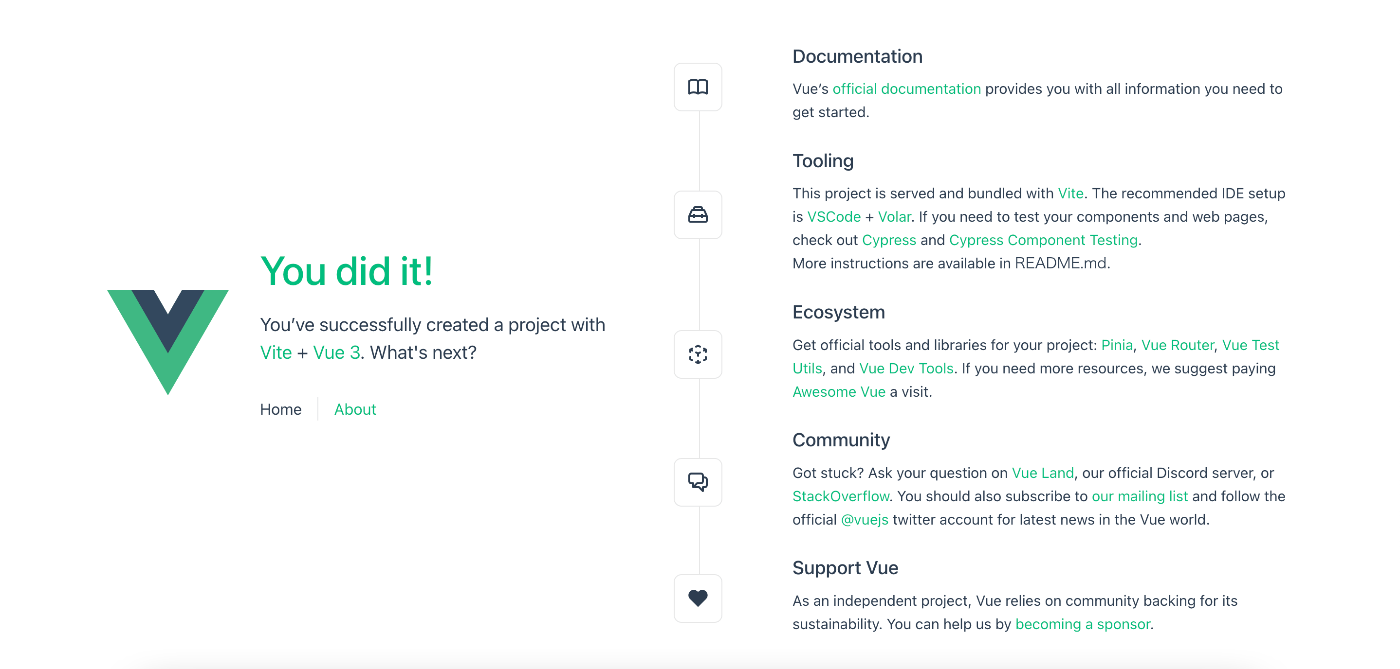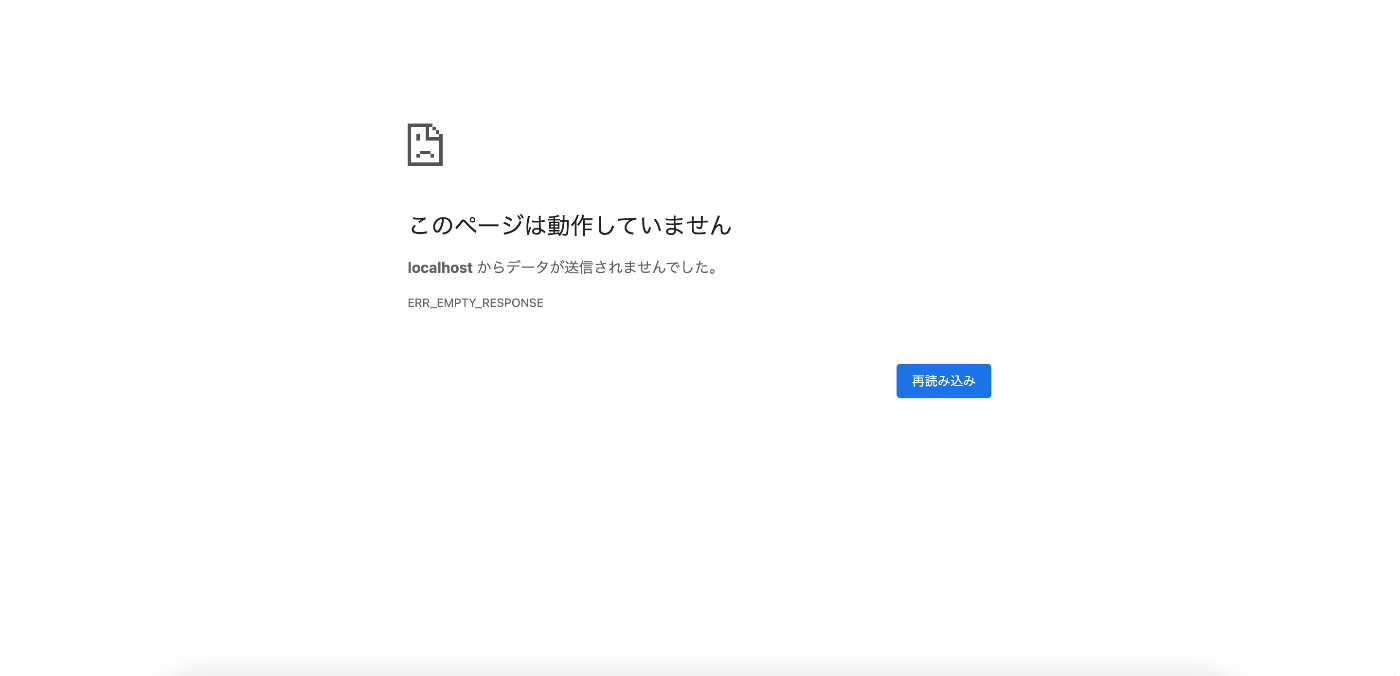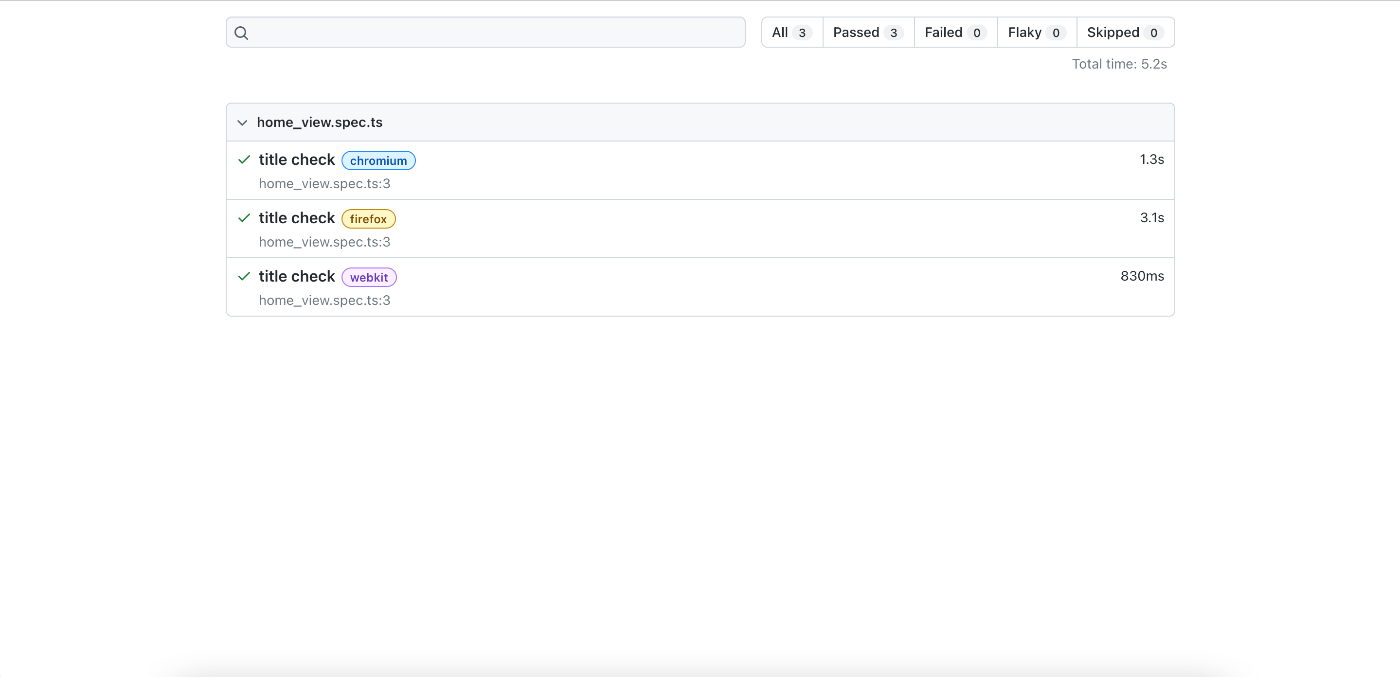Playwright + VueをDockerで実行する
はじめに
テストライブラリであるPlaywrightを使用して、Dockerコンテナ内でVueのテストを行う方法を紹介します。
ソースコード:https://github.com/kurokimaru/playwright-introduction
この記事を読んでほしい人
- Playwrightの使い方を知りたい人
- PlaywrightをDockerコンテナ内で実行する方法が知りたい人
- Playwrightに興味がある人
テストを行う前準備
まずは、Vueアプリを作成してきます。今回は、Vueアプリ作成時に、Playwrightは入れません。後からPlaywrightを追加します。
$ npm init vue@latest
Vue.js - The Progressive JavaScript Framework
✔ Project name: … playwright-introduction
✔ Add TypeScript? … No / Yes
✔ Add JSX Support? … No / Yes
✔ Add Vue Router for Single Page Application development? … No / Yes
✔ Add Pinia for state management? … No / Yes
✔ Add Vitest for Unit Testing? … No / Yes
✔ Add an End-to-End Testing Solution? › No
✔ Add ESLint for code quality? … No / Yes
✔ Add Prettier for code formatting? … No / Yes
ここで、Playwrightを追加します。
$ npm init playwright@latest
Getting started with writing end-to-end tests with Playwright:
Initializing project in '.'
✔ Do you want to use TypeScript or JavaScript? · TypeScript
✔ Where to put your end-to-end tests? · tests
✔ Add a GitHub Actions workflow? (y/N) · false
✔ Install Playwright browsers (can be done manually via 'npx playwright install')? (Y/n) · true
Initializing NPM project (npm init -y)…
ライブラリをインストールします。
$ npm install
ここまでできたら、サーバーを起動し、http://localhost:5173/ で以下のような画面が表示されることを確認しましょう。
$ npm run dev

Playwrightを追加した際に、自動的に生成されたtests-examplesと、tests/example.spec.tsは使用しないので、削除します。
$ rm -rf tests-examples/
$ rm tests/example.spec.ts
Playwrightの設定を行う
まずは、Playwrightの設定を行います。デフォルトの設定のままでも大丈夫ですが、今回はローカルでサーバーを起動して、テストするため、その設定を追加します。playwright.config.tsを以下のように修正してください。
playwright.config.ts
import type { PlaywrightTestConfig } from '@playwright/test'
import { devices } from '@playwright/test'
/**
* Read environment variables from file.
* https://github.com/motdotla/dotenv
*/
// require('dotenv').config();
/**
* See https://playwright.dev/docs/test-configuration.
*/
const config: PlaywrightTestConfig = {
testDir: './tests',
/* Maximum time one test can run for. */
timeout: 30 * 1000,
expect: {
/**
* Maximum time expect() should wait for the condition to be met.
* For example in `await expect(locator).toHaveText();`
*/
timeout: 5000
},
/* Fail the build on CI if you accidentally left test.only in the source code. */
forbidOnly: true,
/* Retry on CI only */
retries: 0,
/* Opt out of parallel tests on CI. */
workers: undefined,
/* Reporter to use. See https://playwright.dev/docs/test-reporters */
reporter: 'html',
/* Shared settings for all the projects below. See https://playwright.dev/docs/api/class-testoptions. */
use: {
/* Maximum time each action such as `click()` can take. Defaults to 0 (no limit). */
actionTimeout: 0,
/* Base URL to use in actions like `await page.goto('/')`. */
baseURL: 'http://localhost:5173',
/* Collect trace when retrying the failed test. See https://playwright.dev/docs/trace-viewer */
trace: 'on-first-retry',
/* Only on CI systems run the tests headless */
headless: false
},
/* Configure projects for major browsers */
projects: [
{
name: 'chromium',
use: {
...devices['Desktop Chrome']
}
},
{
name: 'firefox',
use: {
...devices['Desktop Firefox']
}
},
{
name: 'webkit',
use: {
...devices['Desktop Safari']
}
}
/* Test against mobile viewports. */
// {
// name: 'Mobile Chrome',
// use: {
// ...devices['Pixel 5'],
// },
// },
// {
// name: 'Mobile Safari',
// use: {
// ...devices['iPhone 12'],
// },
// },
/* Test against branded browsers. */
// {
// name: 'Microsoft Edge',
// use: {
// channel: 'msedge',
// },
// },
// {
// name: 'Google Chrome',
// use: {
// channel: 'chrome',
// },
// },
],
/* Folder for test artifacts such as screenshots, videos, traces, etc. */
// outputDir: 'test-results/',
/* Run your local dev server before starting the tests */
webServer: {
/**
* Use the dev server by default for faster feedback loop.
* Use the preview server on CI for more realistic testing.
Playwright will re-use the local server if there is already a dev-server running.
*/
command: 'npm run dev',
port: 5173,
reuseExistingServer: false
}
}
export default config
重要な部分だけ説明すると、
- ここで、テストのオプションを設定しています。headless = falseにすると、テスト実行時にブラウザが表示され、テストが実行されます。
use: {
/* Maximum time each action such as `click()` can take. Defaults to 0 (no limit). */
actionTimeout: 0,
/* Base URL to use in actions like `await page.goto('/')`. */
baseURL: 'http://localhost:5173',
/* Collect trace when retrying the failed test. See https://playwright.dev/docs/trace-viewer */
trace: 'on-first-retry',
/* Only on CI systems run the tests headless */
headless: false
},
- ここで、localのサーバーの設定を行います。reuseExistingServer = trueにすると、すでにlocalでサーバーが立ち上がっている場合、新たにサーバーを起動せず、そのサーバー再利用します。今回は、再利用させないようにしておきます。
webServer: {
/**
* Use the dev server by default for faster feedback loop.
* Use the preview server on CI for more realistic testing.
Playwright will re-use the local server if there is already a dev-server running.
*/
command: 'npm run dev',
port: 5173,
reuseExistingServer: false
}
また、package.jsonに、以下のコマンドを追加します。
+ "test": "playwright test",
ここまで、できたら設定は完了です。テストを書いてみましょう。
赤枠で囲んだように、タイトル部分に「You did it!」と表示されることをテストします。

tests/home_view.spec.ts というファイルを作り、「title check」という名前でテストコードを追加します。
$ touch tests/home_view.spec.ts
import { test, expect } from '@playwright/test'
test('title check', async ({ page }) => {
await page.goto('/')
await expect(page.locator('div.greetings > h1')).toHaveText('You did it!')
})
テストを実行してみましょう。「3 passed」と表示されれば、テスト成功です。
$ npm run test
> playwright-introduction@0.0.0 test
> playwright test
Running 3 tests using 2 workers
3 passed (13.1s)
To open last HTML report run:
npx playwright show-report
Dockerコンテナ内でPlaywrightを実行する
ここまでは、OS上でPlaywrightを実行していましたが、Dockerコンテナ内で実行するようにします。
Dockerfileとdocker-compose.yamlを追加し、以下のように編集します。
touch Dockerfile docker-compose.yaml
公式が用意しているImageを使用します。また、Image作成時にライブラリがインストールされるように、CMDを追加しておきます。
FROM mcr.microsoft.com/playwright:focal
WORKDIR /app
CMD [ "bash", "-c", "npm install && /bin/bash" ]
version: "3.7"
services:
tests:
build:
context: ./
volumes:
- ./:/app
- /app/node_modules
ports:
- "9323:9323"
tty: true
ここまでできたら、コンテナを起動します。
$ docker-compose up -d
コンテナの中に入り、Playwrightを実行してみましょう。playwright-introduction-tests-1という名前でコンテナが起動していたので、このコンテナの中に入り、実行します。
$ docker ps
CONTAINER ID IMAGE COMMAND CREATED STATUS PORTS NAMES
dae563b1b656 playwright-introduction-tests "bash -c 'npm instal…" 31 minutes ago Up 31 minutes 0.0.0.0:9323->9323/tcp playwright-introduction-tests-1
実行すると、以下のようなエラーが出て、テストが失敗します。
$ docker exec -it playwright-introduction-tests-1 bash
root@dae563b1b656:/app# npm run test
// 省略
╔════════════════════════════════════════════════════════════════════════════════════════════════╗
║ Looks like you launched a headed browser without having a XServer running. ║
║ Set either 'headless: true' or use 'xvfb-run <your-playwright-app>' before running Playwright. ║
║ ║
║ <3 Playwright Team ║
╚════════════════════════════════════════════════════════════════════════════════════════════════╝
3 failed
// 省略
このエラーは、headless = trueにするか、xvfb-run playwright testのコマンドで、テストを実行すると、解決します。今回は、xvfb-run playwright testのコマンドで、テストを実行するように変更します。
package.jsonに、以下のコマンドを追加します。
+ "test:docker": "xvfb-run playwright test",
再度、Dockerコンテナ内に入り、テストを実行してみましょう。今度は、テストが成功しました。
$ docker exec -it playwright-introduction-tests-1 bash
root@dae563b1b656:/app# npm run test:docker
> playwright-introduction@0.0.0 test:docker
> xvfb-run playwright test
Running 3 tests using 1 worker
3 passed (11.3s)
To open last HTML report run:
npx playwright show-report
レポートを開いてみましょう。以下のコマンドを実行して、レポートサーバーを起動します。
root@dae563b1b656:/app# npx playwright show-report
Serving HTML report at http://localhost:9323. Press Ctrl+C to quit.
http://localhost:9323 にアクセスしても、レポートが見れません。ホストからDockerコンテナ内のレポートサーバーにアクセスできないようです。

ホストからDockerコンテナ内のレポートサーバーにアクセスできるように、playwright.config.tsを以下のように編集します。
これで、ホストからDockerコンテナ内のレポートサーバーにアクセスできるようになります。また、open: 'always'とすることで、テストの成功・失敗に関わらず、テスト実行後、常にレポートサーバーが起動するようにします。
- reporter: 'html',
+ reporter: [['html', { host: '0.0.0.0', port: '9323', open: 'always' }]],
再度、Dockerコンテナ内に入り、テストを実行してみます。
$ docker exec -it playwright-introduction-tests-1 bash
root@dae563b1b656:/app# npm run test:docker
> playwright-introduction@0.0.0 test:docker
> xvfb-run playwright test
Running 3 tests using 1 worker
3 passed (10.2s)
Serving HTML report at http://0.0.0.0:9323. Press Ctrl+C to quit.
テストが成功し、レポートサーバーが起動しました。http://localhost:9323 にアクセスし、レポートを見てみます。今度はちゃんとレポートが見れました。

最後に
いかがだったでしょうか。難しい設定などは要らずに、PlaywrightをDockerコンテナ内で実行することができました。ソースコードは以下のリポジトリから確認できます。
ソースコード:https://github.com/kurokimaru/playwright-introduction
Discussion